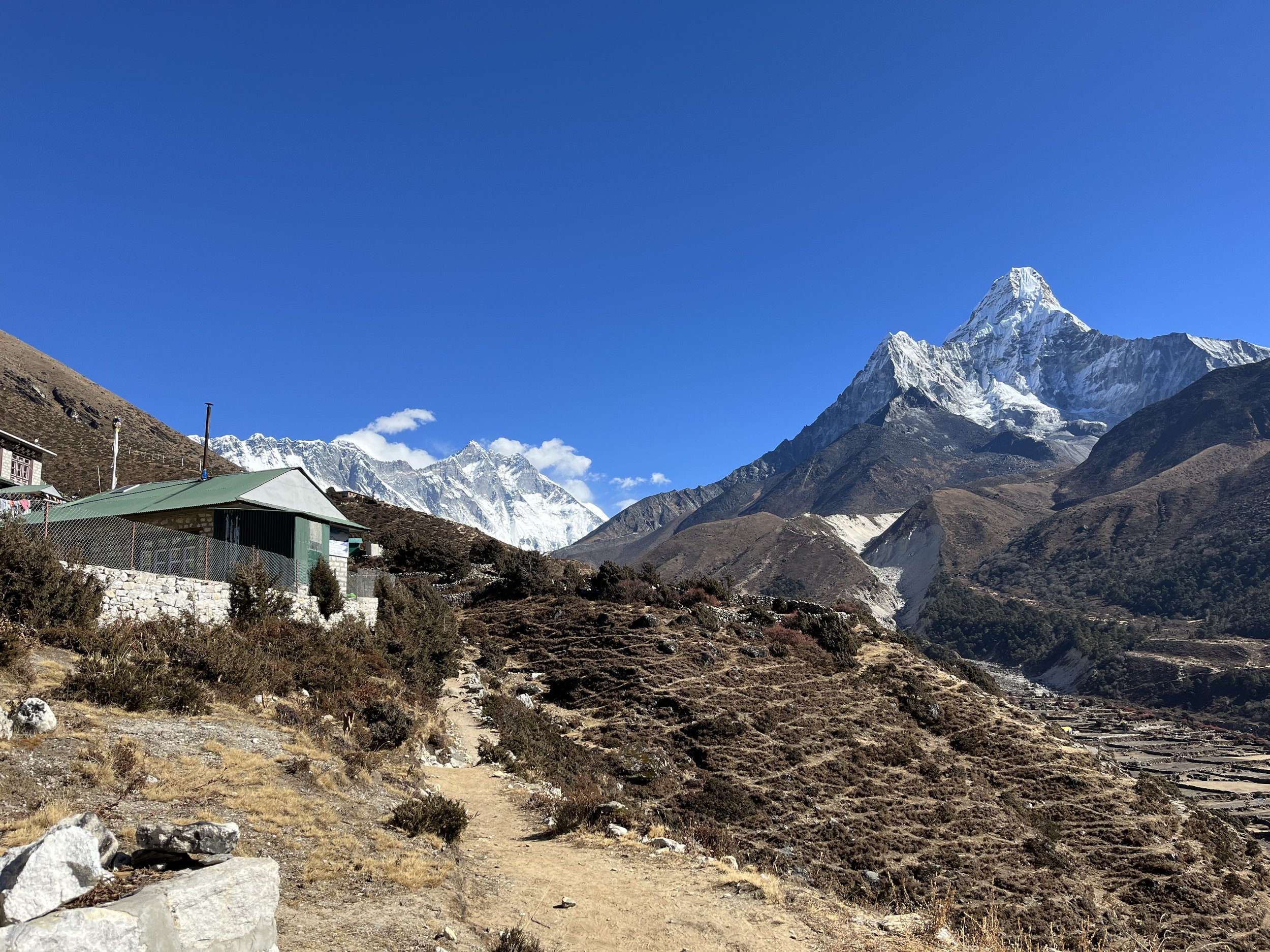I returned to the Sagarmatha (Everest) region for the second time in November 2023. Six years have passed, but the people are as friendly and hospitable as ever, and the mountains are still as majestic. You have to see them with your own eyes.
We had the opportunity to witness the opening of the eye clinic (funded by Eyes4Everest) at the Khunde Hillary Hospital. We got to listen to the stories of how it was before eye camps came to the area. Patients would dig through a box of donated glasses to find one that could help them see. These stories were inspirational and challenged us to continue to provide eye care because there is always a need. We need donations to fund the staffing of the eye clinic for years to come. It would be great if Australian and New Zealand optometrist volunteers could come to the eye clinic to work alongside the staff and share their experiences.
We conducted three days of eye camps across the Khunde Hospital and Pangboche Health Post. A total of 270 patients were examined, with different needs ranging from uncorrected refractive error, cataracts, dry and irritated eyes and even a rope injury to the eye of a mountaineer. Our guides, Nepalese optometrists and vision screening trained nurses helped with translation and testing. Everyone had their eyes thoroughly tested.
There was a long line of people waiting for eye tests. Some of them had walked hours to see us. Some of them had not checked their eyes for several years. One of the challenges in testing patients was translating from English to Nepalese to Sherpa and vice versa. It was like playing a game of Chinese whispers, but fortunately, those waiting in line were eager to help. It was a fantastic experience to go back to primary optometry without all the frills (it has been a while since I have used a direct ophthalmoscope to look at so many retinas).
Our team made it to the Everest Base Camp and saw the tip of Mount Everest. I enjoyed looking at my favourite mountain - the magnificent Ama Dablam (which translates to Mother’s Pearl), which loomed over us for most of the trek. Sadly, we did not quite make it to Gokyo Ri, so most of us will return to do it. On the way back, I got to experience my first helicopter ride. I was initially apprehensive, but it was just a great way to top up the trip. It gives you a whole new perspective seeing the mountains from halfway up compared to being on the ground, and we can see the vast, varied terrain of Nepal between the Sagarmatha region and Kathmandu, the capital city. Seeing houses on top of a mountain with a windy road makes you wonder how people live. How can they access healthcare in these remote regions? We are privileged to live in places with access to clean water, electricity and flushing toilets.
The trek challenges you, but everything is worth it when you meet other like-minded teammates, the guides and porters who treat you like family. I enjoyed meeting friendly villagers, story-sharing travellers and the stray dogs that follow you. Of course, the views are astonishing, and Everest Base Camp is always one of those bucket-list items to pursue, but you get so much more out of it.
After returning a second time, I am already anticipating when I can return. I will never get tired of seeing Ama Dablam, and I still have so many places I want to explore, like Gokyo, Annapurna and Langtang. Maybe it is time you get to experience this challenge, and we might see each other in the mountains.


